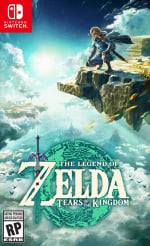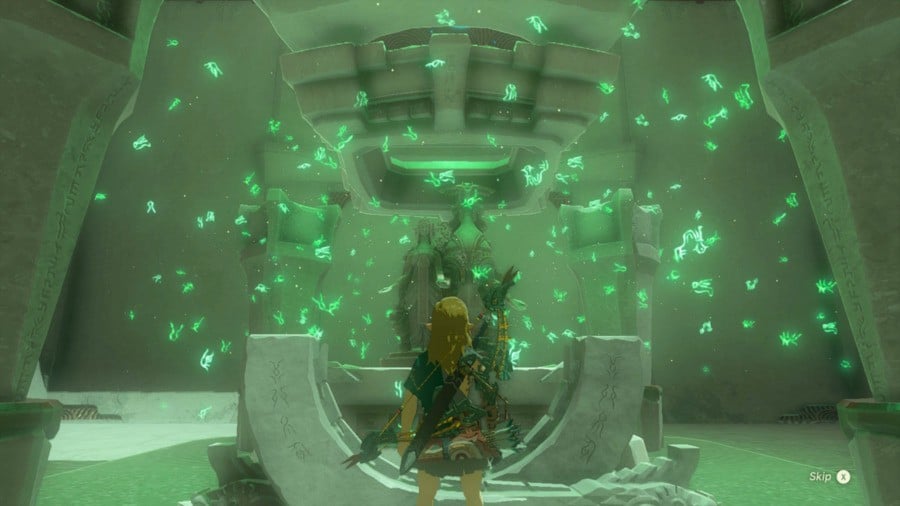
Some people can't help but translate things. We see languages, and we want to decipher them, like the people who climb Mount Everest just because it's there. The languages in games like FEZ, Titan Souls, Heaven's Vault, 7 Days To End With You, and Noita, invite the player to try to crack them to reveal more of the game's lore, and players are often rewarded for doing so, even if it's usually just extra story. Translating the Fez language was literally the first thing I did, and it basically revealed the whole plot of the game before I'd even started. Oops!
But those game examples are all made on indie budgets. What happens when a gigantic, multi-billion-dollar company like Nintendo makes its own language? The answer is that we get THREE languages. The Zelda series has Hylian, Sheikah, and as of Tears of the Kingdom, Zonai — three languages that look very different and were designed to represent the culture of each of their races.
 Watch on YouTube
Watch on YouTubeSubscribe to Nintendo Life on YouTube841k
Hylian was cracked long ago as a cipher of Japanese kana – you may remember the Wind Waker HD Special Edition Wii U, which was emblazoned with a ton of Hylian runes detailing Link's story, or the fact that the game lets you translate Hylian in New Game Plus. Sheikah was translated relatively quickly, too, and turned out to be a cipher of English, where the Sheikah runes each translated to a letter of the English alphabet. It wasn't massively useful in the game, as the Sheikah runes usually just translated to a very literal description of the thing they were written on, but still!
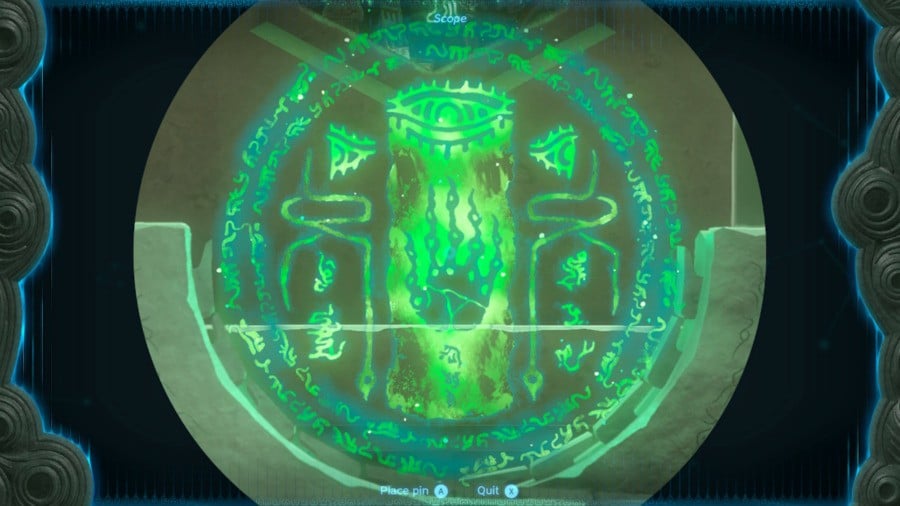
From the very first Tears of the Kingdom trailer, it's been clear that Zonai is a much more complex language that probably hides a ton of secrets. Language sleuths have been working on translating it since the very first trailer, but there seem to be no solid conclusions yet – or, just as likely, people have gotten distracted by the game itself.
That's not to say there hasn't been progress. One team of translators is working on the assumption that Zonai is also a Japanese cipher, just like Hylian, and others think it might match to Chinese characters instead. No one is really sure, but the nature of Zonai – that is, the fact that it's a highly syllabic language – imply that it most likely matches up to something like Japanese or Chinese scripts, which are similarly based around syllabic characters.
Japanese and Chinese characters come from an evolution of pictorial depictions of the things they represent in many cases, and translators are theorising the same thing about Zonai. One particularly prolific translator, u/CloqueWise on Reddit, has even given the runes names, like "scissors" and "woman", and has decided that the runes for "farmer" and "owl" come together to mean "sage" – which makes sense, since our good boy Rauru is associated with owls.
The next issue is how it's supposed to be read. We might assume that it's left to right, like English, but many languages are read in different ways. Arabic is right to left, and many Asian languages can be written in vertical stripes, to be read from top to bottom, column by column. There's plenty of Zonai stuff that has something written on it vertically, after all. There is even potential evidence that Zonai could be written – get this – boustrophedonically, which means alternating left to right and right to left for each line of script. Doesn't that sound exhausting?
There are translations in the game itself, which you'd think might help, but these translations — the ones researcher Wortsworth offers when you bring him a photo of a tablet in the sky — are actually translations of Hylian. Not very useful for translating Zonai. Also, he translates it all into Middle English, which is very hard to read!
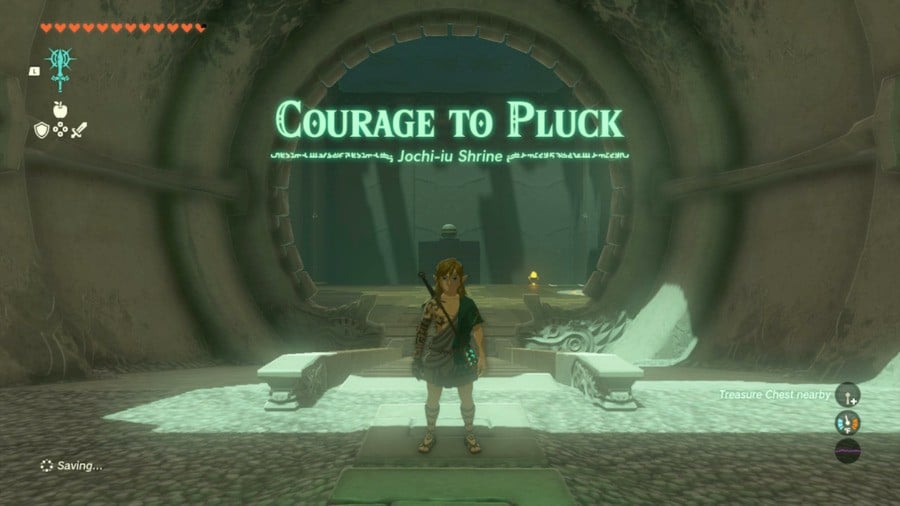
The shrine names may also be a hint – as in, their weird names might actually be what spoken Zonai sounds like. Comparing the shrine names that have commonalities seems to reveal some potential translations, as u/DraconionDevil discovered:
Falling:
Ekochiu Shrine - Rise and Fall
Orochium Shrine - Courage to Fall
This is one I find VERY interesting. Both shrine subtitles contain fall as the last word and the second part of both of these words contains ochiu. Could ochiu be the Zonai word for to fall? Perhaps.
It's well worth reading the full and very detailed Reddit post on this, as it's a great jumping-off point for trying to find those common syllables. Unless, of course, the shrine names are a dead end, like they were in Breath of the Wild. Or if the translations in English aren't accurate, and the original Japanese is closer to the Zonai translation. Or if the language is gibberish, in which case, this is all a colossal waste of time. But we can't think that way! We mustn't give up! Mostly because we've already spent this long trying to decipher it!!!!
What would be really useful is something usually referred to as a Rosetta Stone – something in-game that exists to clear up the language in some way, and serve as a starting point for decoding. Often, these Rosetta Stones are set in stone (haha), in the sense that they have only one particular and very obvious meaning that can't possibly be misinterpreted.
In Fez, this was lampshaded very effectively by having a room with a literal quick brown fox jumping over a lazy dog, in reference to the pangram which was also written nearby. This gave players the chance to understand which letters matched which Fez runes.
But many translators can begin to unravel a language just from a significantly large body of text, and that's how Zonai scholars are working at the moment. Fez, again, has a massive block of text right at the start, as the Hypercube monologues at you in a language you don't understand.
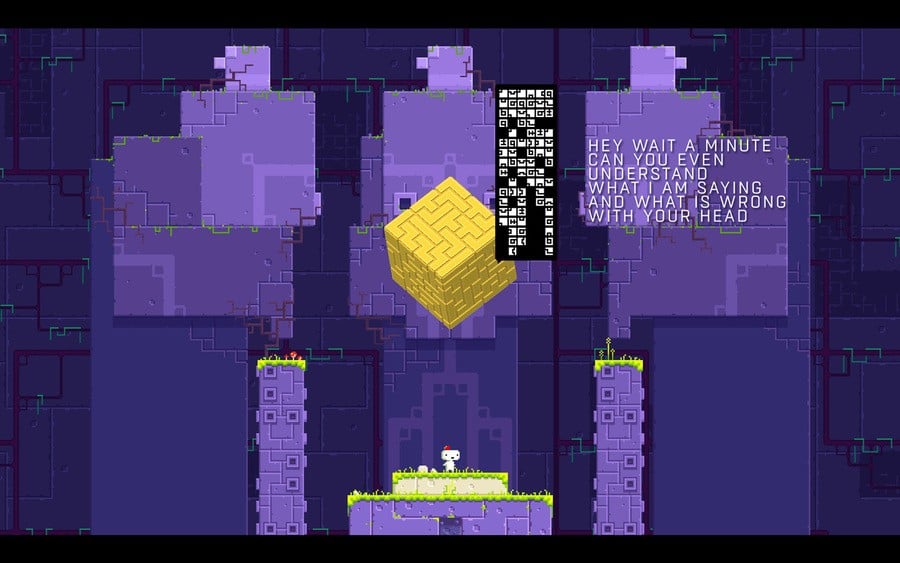
If you assume that the Hypercube is speaking in a language that's a direct match-up for English, which is usually the case, you can start working out letter frequency. E is the most common letter, for example, and from there you can start finding other common prefixes and suffixes, like -ER, -ING, and so on, or common single- and double-letter words like IT, A, and SO. Fez's words are read top-to-bottom, and right-to-left, which makes it a bit tricky, but other than that, it's a breeze.
Tears of the Kingdom has a lot of long text, but none of it really works as a Rosetta Stone yet because we haven't figured out enough of the language's idiosyncrasies. Some scholars have compared word and letter frequency to try to match Zonai up to a known language, but for now, it's largely still speculation, even if the results sometimes give us something that looks right (i.e. contains lots of references to "dragons" and "time").
We also have the Secret Stones, which seem to match up pretty nicely with Japanese kana for the particular element they represent, but... well, that's not particularly useful, since the Secret Stones don't even look much like Zonai. Dangit!
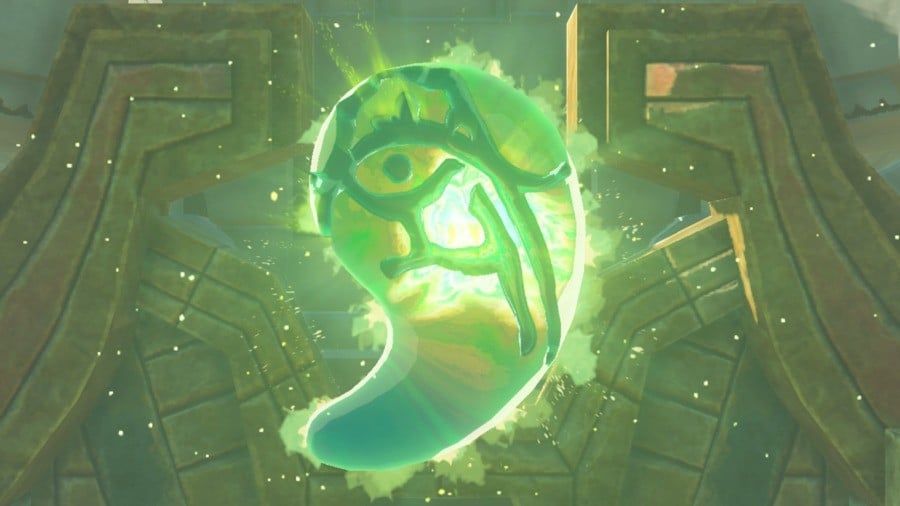
The closest we have is the Ring Ruins text, which is what our friend Wortsworth is working on anyway. Zonai scholar u/DMCthread310 (which is, in itself, a code for a particular colour of embroidery floss – the colour black) has been comparing the English and Japanese translations of the Ring Ruins' text from within the game to try to understand the similarities and meanings behind the text, but they haven't made much headway.
It doesn't help that translating Zonai seems to necessitate being relatively fluent in English, Japanese, and Chinese scripts, on top of being enough of a linguist to speculate on grammar, syntax, word order, and reading patterns. It also doesn't help that Wortsworth translates these passages as fragmented, which leaves out a lot of the conjoining words. Maybe he doesn't read Zonai too well either?
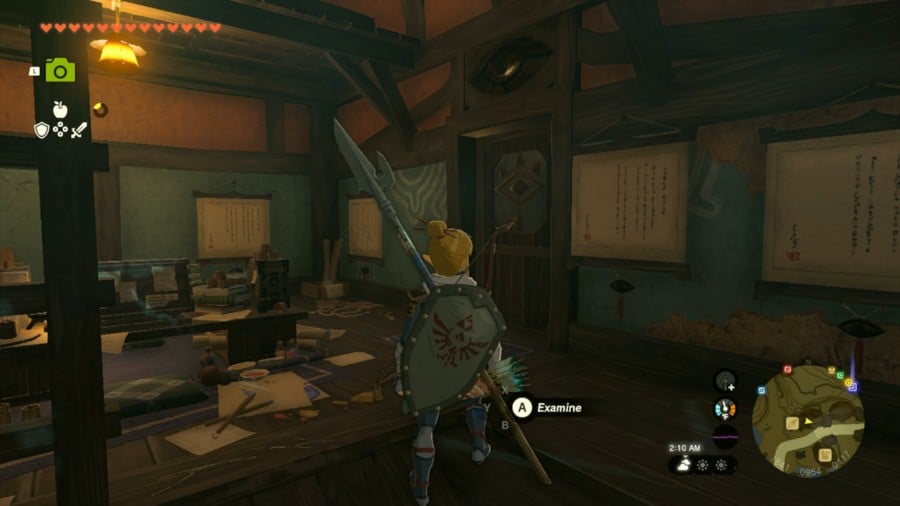
To sum all this up, the Zonai text in Tears of the Kingdom is still largely a mystery. Some people seem to have cracked words, phrases, or word order, but without that Rosetta Stone confirmation, there's little evidence that any of them are right. There isn't really a critical mass of people trying to translate the Zonai for the reasons outlined above – it requires a very particular type of person, and besides, the game only just came out, so most players are still enjoying the game like a normal person, probably.
For now, Zonai can keep its secrets. But not for long, Zonai. We're coming for you.
